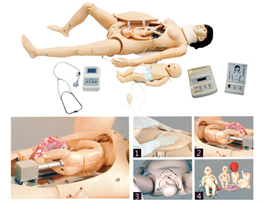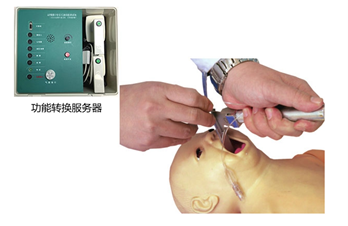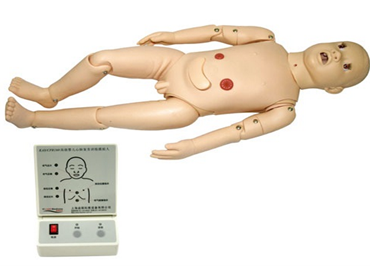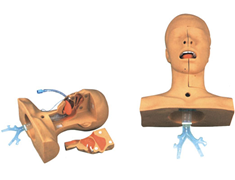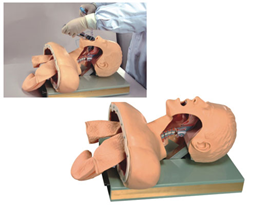Description
Model:AG-SMF55
Brand: Advanced Health Canada
Country of origin: Canada
This system consists of pregnant women, fetuses, newborn infusion simulators, newborn emergency simulators and software, simulating prenatal examinations, delivery and postpartum care. It provides typical cases of normal and abnormal delivery: such as normal delivery, umbilical cord around the neck delivery, breech dystocia, preeclampsia, cesarean section, umbilical cord prolapse, premature delivery, potential prenatal, intrapartum and postpartum hemorrhage, etc., and guides obstetric workers to identify different stages of delivery through the delivery chart, clinically diagnose abnormal delivery, and deal with it reasonably; through clinical monitoring of the fetus, timely diagnose fetal intrauterine distress, implement treatment, and train newborn care and emergency treatment.
Functional features:
- Maternal function:
▇ The mechanical transmission device is equipped with two mechanical adapters for connecting the simulated fetus for delivery. There are elastic fastening devices between the fetus and the adapter, the adapter and the adapter, and the adapter and the transmission device. There are system protective travel switches at the upper and lower ends of the transmission device.
▇ The delivery process and the fetal heart sound controller can pause, initialize, start, and continue the delivery process. The delivery speed can be selected according to needs, with a total of 1 to 4 gears.
▇ Fetal heart rate auscultation: The frequency and volume of the fetal heart rate can be set, and the heart rate is adjustable in the range of “80–180”.
▇ Can simulate head delivery, breech delivery, airway stenosis, umbilical cord around the neck, placenta anterior, etc.
▇ Equipped with a highly simulated cervix.
▇ Equipped with a Leopold practice lifting “cushion” for Leopold maneuver practice.
▇ Equipped with a module for changes in the relationship between the cervix and the birth canal before delivery, which can be assembled on the mother for training
- Stage 1: The cervical os has not expanded, the cervical canal has not disappeared, and the relationship between the fetal head and the ischial spine plane is -5.
- Stage 2: The cervical os has expanded by 2cm, the cervical canal has disappeared by 50%, and the relationship between the fetal head and the ischial spine plane is -4.
- Stage 3: The cervical os has expanded by 4cm, the cervical canal has completely disappeared, and the relationship between the fetal head and the ischial spine plane is -3.
- Stage 4: cervical dilation 5cm, cervical canal completely disappeared, the positional relationship between the fetal head and the ischial spine plane is 0.
- Stage 5: cervical dilation 7cm, cervical canal completely disappeared, the positional relationship between the fetal head and the ischial spine plane is +2.
- Stage 6: cervical dilation 10cm, cervical canal completely disappeared, the positional relationship between the fetal head and the ischial spine plane is +5.
▇ The descent of the fetal head and the dilation of the cervical os can be measured.
▇ Various placental positions can be simulated.
▇ Fetus for delivery.
▇ The mother’s arm can establish a venous channel, and medication and nutrition can be given.
▇ Vulvar suture practice module, divided into three incision positions: lower left, middle, and lower right.
▇ Tracheal intubation training can be performed.
▇ Pregnant women CPR cardiopulmonary resuscitation: It can be designed according to the 2015 International CPR Guidelines, and can perform artificial respiration and external cardiac compression
1) Compression depth is too large: barcode red;
2) Compression depth is correct: barcode green;
3) Compression depth is too small: barcode yellow.
4) Excessive blowing volume: barcode red;
5) Correct blowing volume: barcode green;
6) Too small blowing volume: barcode yellow;
7) The indicator light of the stomach turns red when blowing into the stomach;
▇ Manual simulation of carotid artery pulsation.
▇ Arm simulation of blood pressure measurement.
- Neonatal function:
▇ Venous puncture function: Neonatal scalp vein puncture and arm vein puncture can be performed. There is a sense of failure during venous puncture, and blood return is generated when the puncture is successful.
▇ Nursing function: Eye washing and dripping, cleaning and bandaging of newborns.
▇ Can perform oral and nasal intubation, sputum suction, tracheal intubation, and gastric lavage.
▇ Can perform infant umbilical cord care, scalp vein puncture, and arm vein puncture. There is a sense of emptiness during puncture, and blood return occurs.
▇ Neonatal cardiopulmonary resuscitation: supports multiple ventilation methods such as mouth-to-mouth, mouth-to-nose, and simple respirator-to-mouth; can perform artificial respiration; can perform external cardiac compression.
System composition:
▇ Maternal body for delivery and adult first aid;
▇ Newborn for first aid and nursing;
▇ Fetus for delivery;
▇ Delivery process and fetal heart sound controller;
▇ Adult CPR electronic display;
▇ Simulated cervical opening;
▇ Antenatal cervical changes and birth canal relationship module;
▇ 48 hours postpartum uterus;
▇ Perineal incision suture module;
▇ Simulated placenta/umbilical cord;
▇ Leopold practice lifting “cushion”;
▇ Other related auxiliary equipment.
Reason To Buy
This system consists of pregnant women, fetuses, newborn infusion simulators, newborn emergency simulators and software, simulating prenatal examinations, delivery and postpartum care. It provides typical cases of normal and abnormal delivery: such as normal delivery, umbilical cord around the neck delivery, breech dystocia, preeclampsia, caesarean section, umbilical cord prolapse, premature delivery, potential prenatal, intrapartum and postpartum hemorrhage, etc., and guides obstetric workers to identify different stages of delivery through the delivery chart, clinically diagnose abnormal delivery, and deal with it reasonably; through clinical monitoring of the foetus, timely diagnose fetal intrauterine distress, implement treatment, and train new-born care and emergency treatment.
Parameters
Country of origin: Canada
Packing Desrciption


